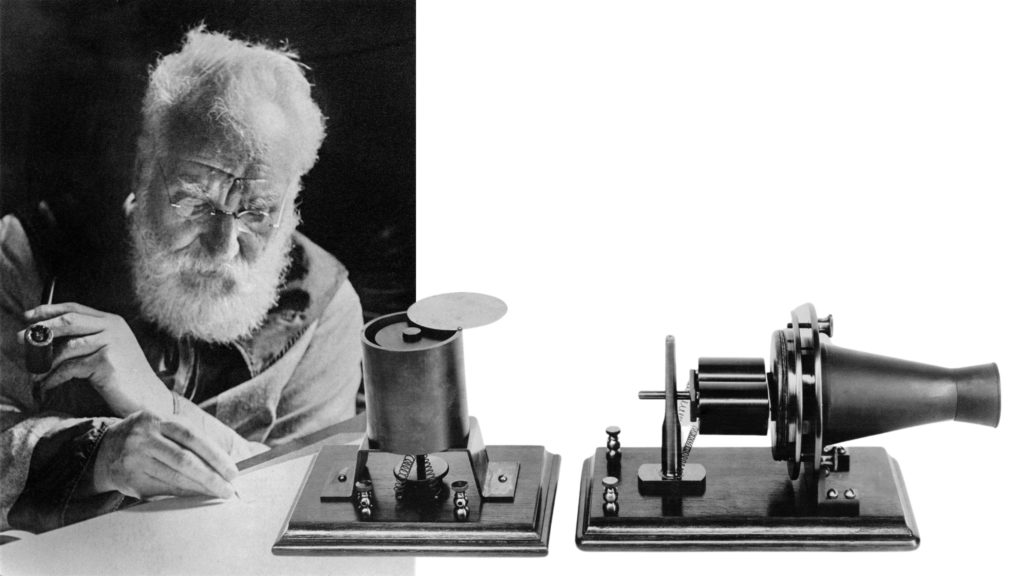Why do people still use POTS lines? If you are old enough to remember anxiously waiting to press record on your boom boxes tape recorder for the week’s top songs to play on the radio…then you are old enough to remember when having a phone in your bedroom was a BIG DEAL. The telephone was all the rage…once. Just like walkmans. And boom boxes. And VCRs.
Before computers and record players, and even the automobile, the telephone changed the world in a fundamental way. And yet the original POTS lines of the communications networks are still in play, despite the rapid improvements in digital technology and the adoption of cellular and mobile devices. And now, with the FCC removing the maintenance mandate of the POTS lines by the telephone carriers, it’s clear the telephone is going the way of the black and white TV and is becoming a fond memory. But with the trend clearly pointing to the retirement of the POTS wires, why do so many people still use them?
History of POTS Lines
It all began in 1876 when Alexander Graham Bell uttered into his invention the famous statement “Watson, come here.” When Bell introduced the telephone to then President Rutherford B. Hayes, his response was disheartening:
“That’s an amazing invention, but who would ever want to use one of them?”
Within 3 years, the telephone had amassed 49,000 users and by 1905 surpassed 2.2 Million phones in use. Today, we wouldn’t know what to do without one of these devices readily available for our use.
Why Were They So Transformational
Before the telephone, communications were limited to in-person visits or the postal service. Even the telegraph, while providing faster communications, was limited in how a person could reach another. Imagine sending a notice to a far-off family of a birth or death and having it take months to be received. It’s unimaginable today.
This is why the telephone and POTS lines were so revolutionary. Elon University described the telephone as being able to:
- “…Help further democracy;
- lead to additional advances in networked communications;
- allow social decentralization, resulting in a movement out of cities and more flexible work arrangements;
- change marketing and politics;
- alter the ways in which wars are fought;
- open up new job opportunities;
- allow more public feedback;
- make the world smaller, increasing contact between peoples of all nations and thus fostering world peace;
- be an aid for physicians, police, fire, and emergency workers;
- be a valuable tool for journalists;
- bring people closer together, decreasing loneliness and building new communities;
- have an impact on language patterns and introduce new words;
- someday lead to an advanced form of the transmission of intelligence.”
Many of us heard these same benefits as the cell phone and internet gained in popularity, and for good reason.
3 Reasons Why We Still Use POTS Lines
Once mobile devices and VoIP technology entered the scene, the tide turned on the traditional POTS line and telephone rapidly. With usage falling from an all-time high in 2003 when the telephone was present in 95% of households. Fast forward to 2018 and only 40% of households still had a telephone in their home. This number has continued to fall rapidly in the past years. Added to this challenge are the lines, which some may be as old as 150 years, are disintegrating. Weather events are bringing lines down, as well as fires, accidents, and even animals. With fewer subscriptions and demands on the lines, it has become increasingly more expensive for telecom companies to maintain the wires. So much so that a petition to the FCC to remove the required maintenance mandate placed on the telcos to keep the POTS lines running, putting in motion the trend towards retiring the copper wires. But with all this evidence pointing toward the sunsetting of POTS lines, why are people still using the old technology?
Perceived enhanced reliability – for years, the copper wires of the telephone just worked and worked reliably. Redundancies built into the network meant that a line would always go through and power outages would have no effect on your ability to make a phone call, especially in emergencies. Many still believe that the old technology is more reliable than newer digital and mobile technologies – which was true when cell phones and VoIP first entered the market. However, so many strides have been made in the digital and mobile networks that the reliability of these connections has far surpassed that of copper wire. Especially when you account for the degradation of the POTS lines and their susceptibility to natural disasters. With built-in redundancies and failover in addition to battery back-ups, VoIP and digital solutions now outperform their legacy competitors.
Skepticism/Aversion to change (it’s always worked before) – Another reason why many are hanging onto this legacy technology is our natural inclination to resist change. This can be seen best in the diffusion of innovation theory. The theory studies how ideas are spread in a social group and people tend to fall into five categories: Innovators, Early Adopters, Early Majority, Late Majority, and Laggards. The spread is pretty even, with most falling into the early and late majority but a few fall into the laggard category, who are the last to adopt new technology and tend to focus on tradition and how things were always done.
Procrastination – Enough said?
POTS or No POTS – That Is The Question
Actually, the real question is not if you continue to use POTS lines but when you make the transition. And the only one who can answer that question is you. So, when will you make the switch?
POTS Line Replacement Solutions
3 Options for POTS Line Replacement
What are POTS Lines? And What Does FCC Order 19-72A1 for POTS Lines Mean?








